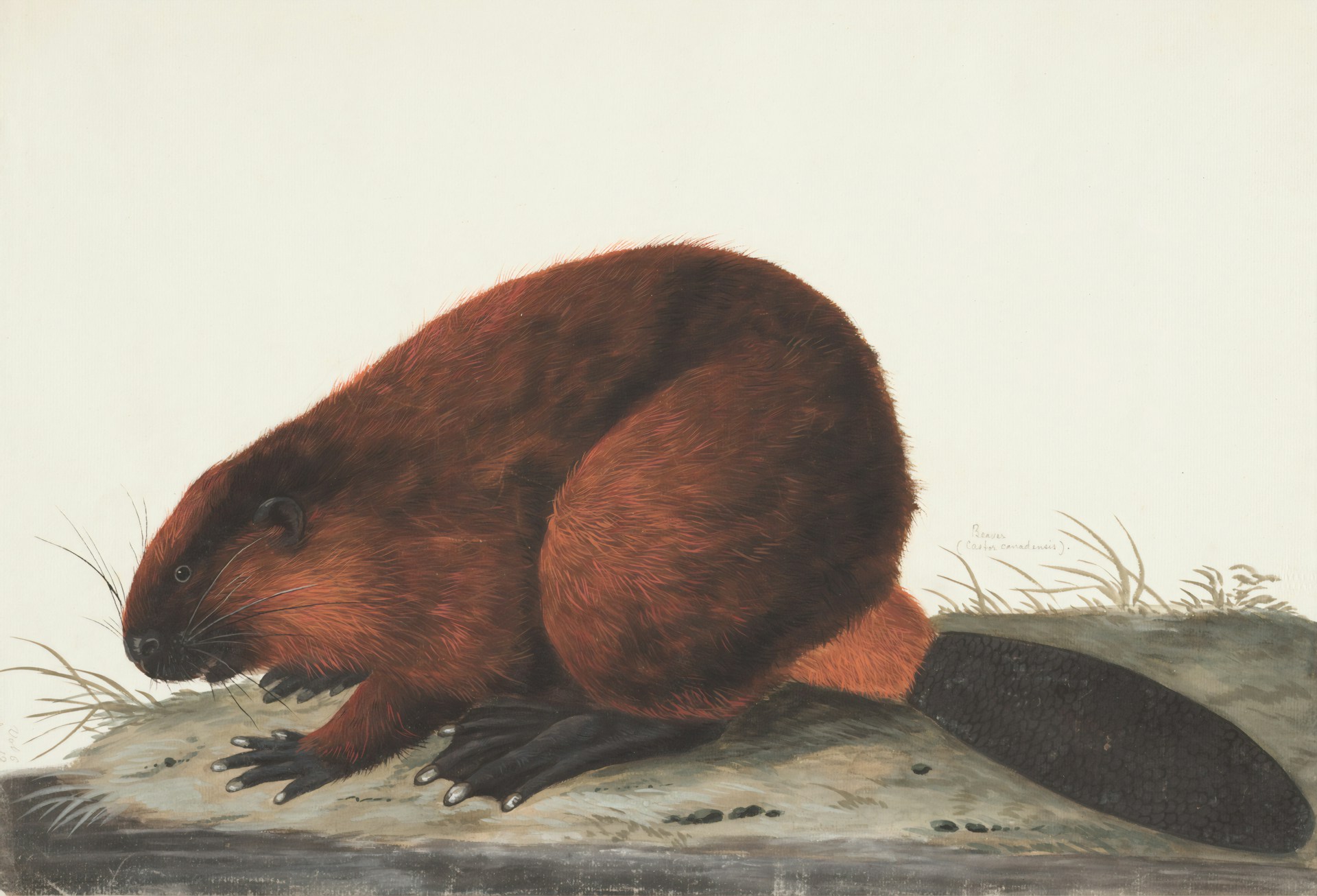How beavers built New York
Under Astor Place, a reminder of the animal’s connection to the city
Sara Hashemi • October 30, 2024

Archival illustration of a beaver [Credit: McGill Library Archives]
If you’ve ever gotten off the subway at Astor Place, you might’ve noticed an unusual critter etched in the station’s walls. Yellow beavers chewing on trees are framed by green tiles adorned with decorative foliage. These plaques nod to the connection the station’s namesake held to the beaver pelt trade — and to a time when beavers were abundant across the city.
Before European colonization, an estimated 60 million beavers roamed across New York state. “Practically every river, lake, stream and pond in the state of New York would have beavers in them at some point,” says Ben Goldfarb, the author of “Eager: The Surprising, Secret Lives of Beavers and Why They Matter.”
Europeans coveted these beavers for their pelts. John Jacob Astor, the first multimillionaire in American history, made his fortune through the fur trade, and the Astor family became one of the most powerful figures in New York real estate. Think of all the places named after Astor and his descendants in the city: Astor Place, Astoria, Astor Row. But the fur trade also decimated New York’s beaver population, and by the 1800s, there were almost no beavers left.
We might look at New York and only see a city of concrete, steel and glass, says Goldfarb. Yet it’s also a city that, in a lot of ways, was built on the backs of wildlife. The destruction of beavers facilitated Astor becoming one of the most important real estate moguls in New York’s history, Goldfarb says.
“Even though New York doesn’t look like [a] wildlife habitat today, it’s actually inextricably tangled with the history of this amazing animal,” he adds. “Without beavers, it’s hard to imagine New York existing in its present form, for better or worse. I find that really powerful.”
And beavers don’t need to stay in New York City’s past. In 2007, for the first time in 200 years, a beaver was spotted in New York City. The beaver, which was named José by the biologists who found it, was seen swimming in the Bronx River. Beavers are now present on Staten Island as well, according to the New York City Parks Department. “For so long,” says Goldfarb, “the only beaver you could see in the city of New York was the little ceramic at Astor Place, and now there are some flesh and blood beavers out there.”
Goldfarb would love to see even more of them in the city. With their dams, the animals create buffers against drought and flooding, build habitats for different endangered species and help sequester carbon. Although there would be some difficulty in managing these new neighbors, there are ways humans can learn to coexist with them, and in some places, we already have.
“It’s exciting to think that New York City is this place whose history is intertwined with beavers,” he says, “and now its future could be as well.”